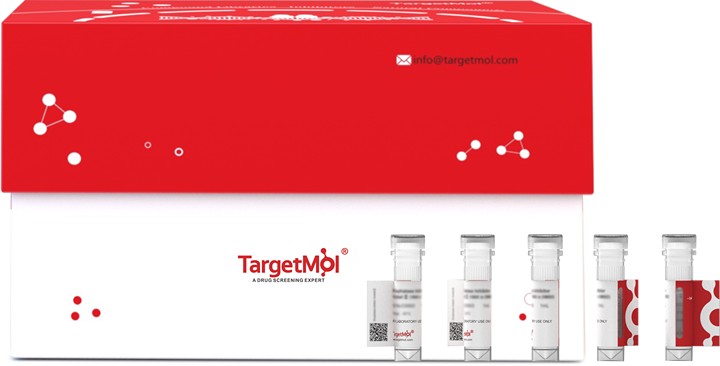购物车
- 全部删除
 您的购物车当前为空
您的购物车当前为空

DHX9 Protein, Human, Recombinant (His & SUMO) is expressed in E. coli.

| 规格 | 价格 | 库存 | 数量 |
|---|---|---|---|
| 20 μg | ¥ 1,320 | 20日内发货 | |
| 100 μg | ¥ 2,680 | 20日内发货 | |
| 1 mg | ¥ 11,700 | 20日内发货 |
| 生物活性 | Activity has not been tested. It is theoretically active, but we cannot guarantee it. If you require protein activity, we recommend choosing the eukaryotic expression version first. |
| 产品描述 | DHX9 Protein, Human, Recombinant (His & SUMO) is expressed in E. coli. |
| 种属 | Human |
| 表达系统 | E. coli |
| 标签 | N-6xHis-SUMO |
| 蛋白编号 | Q08211 |
| 别名 | RNA helicase A,Nuclear DNA helicase II (NDH II),NDH2,LKP,Leukophysin (LKP),DHX9,DExH-box helicase 9,DEAH box protein 9,DDX9,ATP-dependent RNA helicase A |
| 氨基酸序列 | NQVGVVPWSPPQSNWNPWTSSNIDEGPLAFATPEQISMDLKNELMYQLEQDHDLQAILQERELLPVKKFESEILEAISQNSVVIIRGATGCGKTTQVPQFILDDFIQNDRAAECNIVVTQPRRISAVSVAERVAFERGEEPGKSCGYSVRFESILPRPHASIMFCTVGVLLRKLEAGIRGISHVIVDEIHERDINTDFLLVVLRDVVQAYPEVRIVLMSATIDTSMFCEYFFNCPIIEVYGRTYPVQEYFLEDCIQMTHFVPPPKDKKKKDKDDDGGEDDDANCNLICGDEYGPETRLSMSQLNEKETPFELIEALLKYIETLNVPGAVLVFLPGWNLIYTMQKHLEMNPHFGSHRYQILPLHSQIPREEQRKVFDPVPVGVTKVILSTNIAETSITINDVVYVIDSCKQKVKLFTAHNNMTNYATVWASKTNLEQRKGRAGRVRPGFCFHLCSRARFERLETHMTPEMFRTPLHEIALSIKLLRLGGIGQFLAKAIEPPPLDAVIEAEHTLRELD |
| 蛋白构建 | 325-840 aa |
| 蛋白纯度 | > 90% as determined by SDS-PAGE. |
| 分子量 | 74.6 kDa (predicted) |
| 内毒素 | < 1.0 EU/μg of the protein as determined by the LAL method. |
| 缓冲液 | Tris-based buffer, 50% glycerol |
| 复溶方法 | A Certificate of Analysis (CoA) containing reconstitution instructions is included with the products. Please refer to the CoA for detailed information. |
| 存储 | Lyophilized powders can be stably stored for over 12 months, while liquid products can be stored for 6-12 months at -80°C. For reconstituted protein solutions, the solution can be stored at -20°C to -80°C for at least 3 months. Please avoid multiple freeze-thaw cycles and store products in aliquots. |
| 运输方式 | In general, Lyophilized powders are shipping with blue ice. Solutions are shipping with dry ice. |
| 研究背景 | Multifunctional ATP-dependent nucleic acid helicase that unwinds DNA and RNA in a 3' to 5' direction and that plays important roles in many processes, such as DNA replication, transcriptional activation, post-transcriptional RNA regulation, mRNA translation and RNA-mediated gene silencing. Requires a 3'-single-stranded tail as entry site for acid nuclei unwinding activities as well as the binding and hydrolyzing of any of the four ribo- or deoxyribo-nucleotide triphosphates (NTPs). Unwinds numerous nucleic acid substrates such as double-stranded (ds) DNA and RNA, DNA:RNA hybrids, DNA and RNA forks composed of either partially complementary DNA duplexes or DNA:RNA hybrids, respectively, and also DNA and RNA displacement loops (D- and R-loops), triplex-helical DNA (H-DNA) structure and DNA and RNA-based G-quadruplexes. Binds dsDNA, single-stranded DNA (ssDNA), dsRNA, ssRNA and poly(A)-containing RNA. Binds also to circular dsDNA or dsRNA of either linear and/or circular forms and stimulates the relaxation of supercoiled DNAs catalyzed by topoisomerase TOP2A. Plays a role in DNA replication at origins of replication and cell cycle progression. Plays a role as a transcriptional coactivator acting as a bridging factor between polymerase II holoenzyme and transcription factors or cofactors, such as BRCA1, CREBBP, RELA and SMN1. Binds to the CDKN2A promoter. Plays several roles in post-transcriptional regulation of gene expression. In cooperation with NUP98, promotes pre-mRNA alternative splicing activities of a subset of genes. As component of a large PER complex, is involved in the negative regulation of 3' transcriptional termination of circadian target genes such as PER1 and NR1D1 and the control of the circadian rhythms. Acts also as a nuclear resolvase that is able to bind and neutralize harmful massive secondary double-stranded RNA structures formed by inverted-repeat Alu retrotransposon elements that are inserted and transcribed as parts of genes during the process of gene transposition. Involved in the positive regulation of nuclear export of constitutive transport element (CTE)-containing unspliced mRNA. Component of the coding region determinant (CRD)-mediated complex that promotes cytoplasmic MYC mRNA stability. Plays a role in mRNA translation. Positively regulates translation of selected mRNAs through its binding to post-transcriptional control element (PCE) in the 5'-untranslated region (UTR). Involved with LARP6 in the translation stimulation of type I collagen mRNAs for CO1A1 and CO1A2 through binding of a specific stem-loop structure in their 5'-UTRs. Stimulates LIN28A-dependent mRNA translation probably by facilitating ribonucleoprotein remodeling during the process of translation. Plays also a role as a small interfering (siRNA)-loading factor involved in the RNA-induced silencing complex (RISC) loading complex (RLC) assembly, and hence functions in the RISC-mediated gene silencing process. Binds preferentially to short double-stranded RNA, such as those produced during rotavirus intestinal infection. This interaction may mediate NLRP9 inflammasome activation and trigger inflammatory response, including IL18 release and pyroptosis. Finally, mediates the attachment of heterogeneous nuclear ribonucleoproteins (hnRNPs) to actin filaments in the nucleus.; (Microbial infection) Plays a role in HIV-1 replication and virion infectivity. Enhances HIV-1 transcription by facilitating the binding of RNA polymerase II holoenzyme to the proviral DNA. Binds (via DRBM domain 2) to the HIV-1 TAR RNA and stimulates HIV-1 transcription of transactivation response element (TAR)-containing mRNAs. Involved also in HIV-1 mRNA splicing and transport. Positively regulates HIV-1 gag mRNA translation, through its binding to post-transcriptional control element (PCE) in the 5'-untranslated region (UTR). Binds (via DRBM domains) to a HIV-1 double-stranded RNA region of the primer binding site (PBS)-segment of the 5'-UTR, and hence stimulates DHX9 incorporation into virions and virion infectivity. Plays also a role as a cytosolic viral MyD88-dependent DNA and RNA sensors in plasmacytoid dendritic cells (pDCs), and hence induce antiviral innate immune responses. Binds (via the OB-fold region) to viral single-stranded DNA unmethylated C-phosphate-G (CpG) oligonucleotide. |